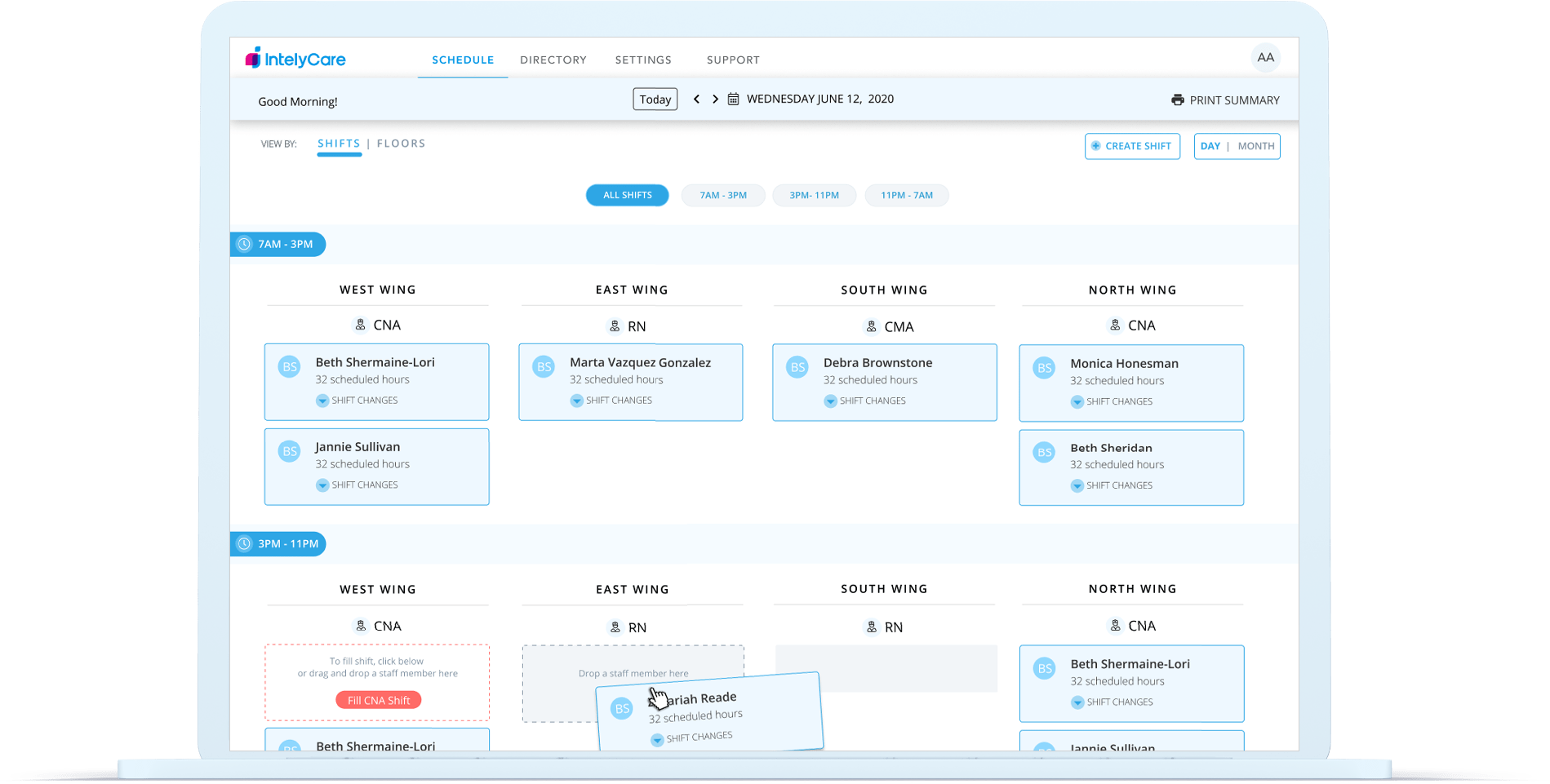While many industries – from retail to foodservice – are already using advanced technology to optimize workforce utilization and scheduling, most of the healthcare industry has lagged in adopting more advanced systems with nursing and rehab facilities, notably behind the rest of the sector. Most post-acute facilities are still working with outdated nurse scheduling systems like pen and paper or the digital equivalent: home-grown spreadsheet processes that fail to capture useful data much less provide valuable insights. Between the legislated staffing ratio mandates, a limited pool of available workers, and other unique scheduling challenges in the post-acute space, these organizations desperately need more user-friendly nurse staffing and scheduling tools to juggle all these requirements. In addition, they could also benefit from a technology that gathers vital data to support more advanced workforce management techniques.
Digitizing the scheduling process is a big undertaking, especially based on where many facilities are today, but ‘perfect’ should never be the enemy of ‘good.’ Instead of avoiding this endeavor altogether, facilities should focus first on adopting basic digital capabilities to get more efficient, and then begin to scale up to more complex, ‘nice to have’ capabilities when the time is right.
The following list describes the process of moving from basic but essential digitization to more advanced techniques. It can serve as a roadmap for organizations wanting to modernize their scheduling workflow:
- Adopt a digital scheduling platform
- Use platform to ensure safe and compliant staffing levels
- Leverage data within the platform to improve cost management and efficiency:
- Prioritize affordable staff over higher-cost resources (i.e., nurses going into overtime or from nursing agencies) when possible.
- Schedule staff based on licensure (i.e., avoid scheduling higher-paid RN when an LPN can fill the same shift.)
- Identify nurses with the competencies and training required for the specific demands of the shift.
- Pull trends from data to increase staffing consistency and improve clinical performance:
- Schedule limited pools so the same staff works with the same residents on the same floor, enabling greater retention of clinical knowledge and stronger resident-staff relationships.
- Bring nurses into the scheduling equation to improve employee engagement, retention, and satisfaction:
- Allow nursing professionals to build their own schedules and choose not to work when they need a break.
- Enable nurse self-scheduling via crowdsourcing to reduce the burden on the scheduler.
- Prevent nurse burnout or forced overtime (supporting cost-efficiencies and nurse satisfaction/wellbeing)
Revamping the scheduling function will take dedication, time, and effort – but the return on this work is huge. Though the process is complex, this checklist will help organizations tap into the many benefits of scheduling technology by starting wherever they are and taking it one step at a time.
Frustrated with antiquated staffing and scheduling? Welcome to the 21st century. Get in touch today, and our team will be happy to provide a hands-on demonstration for your facility. Get started today.
